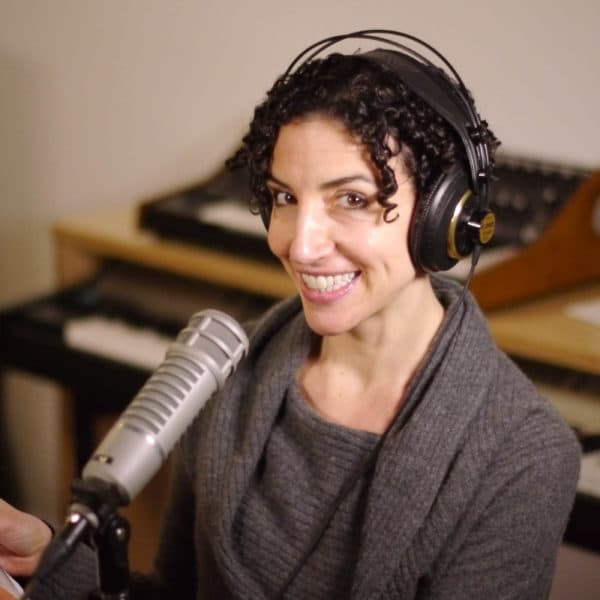Advertisement
'What Am I Hearing?' | Circle Round 21
Resume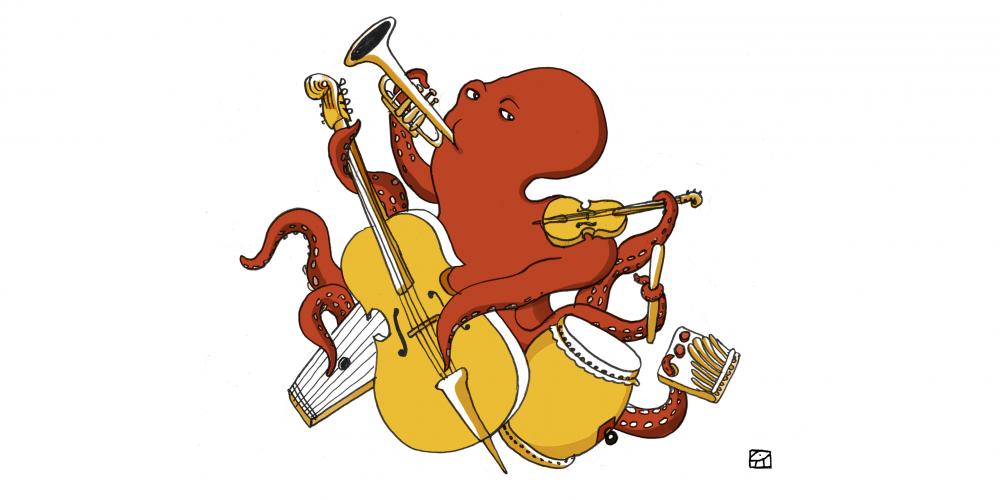
We have a very special treat for you this week--a special episode about the music of Circle Round! All music is composed by Eric Shimelonis. Learn more about he makes these stories come alive and tell us about your favorite instrument!
ADULTS! Print out this picture so everyone can color while listening. We’re also keeping an album so share your picture on Facebook, Twitter, Instagram or Pinterest, and tag it with #CircleRound. We'd love to see it!
Things To Think About After Listening
Is there music you’ve heard on Circle Round that you’ve especially enjoyed? If so, tell us about it! Think about which episode — or episodes — had the music you like best. Then think about why you enjoyed it so much. Next, have a grown-up help you use the voice-memo app on a smartphone to record your thoughts… and email us the recording. Our address is circleround@wbur.org . We might include your message at the end of a future episode!
And if you play an instrument, we’d love to hear about that, too! Or — better yet — see it! Find some paper and draw a picture of you playing your instrument. Then, have a grown-up send it our way.
Now that you’ve learned more about the music of Circle Round, maybe you want to go back and listen to some episodes again… to really focus on the instrument being played. Listen to all of them HERE!
Story Transcript
SHEIR: Hi there!
It’s me: Rebecca Sheir.
If you’ve been listening to Circle Round, you know we’ve introduced you to some extraordinary stories:
[Montage of episodes]
… stories that take place all over the world…
[Montage of countries]
...and feature unforgettable characters:
SOT: (from Kathryn Hahn in “Stella and the Dragon”) It is I! Stella the Powerful!
SOT: (from Jason Alexander in “It Could Always Get Worse”) Tell me you have some other ideas!
SOT: (from Tony Hale in “The Shepherd’s Disguise”) My brilliant brain has figured out what you should do!
But with each and every episode, there’s more than just the story… and the setting… and the characters you’ll meet. There’s… the music.
Like the theme song, of course: the one you hear at the beginning and end of the show.
Then there’s the music you hear throughout Circle Round.
And today, we’ll tell you the stories behind that music... including what instruments you hear, and how many of these instruments come from a very specific place around the world — just like our folktales!
All the music on Circle Round was written by someone whose name you’ve heard over and over in our closing credits: composer and sound designer Eric Shimelonis.
And Eric just happens to be with me here today, in the very studio where Circle Round gets produced each and every week! Hi, Eric!
SHIMELONIS: Hi, Rebecca!
SHEIR: Now, Eric, can you talk about the role music plays in Circle Round?
SHIMELONIS: I want the music of each of these episodes to function like another character in the story. And for me that means using the pure sound of solo instruments.
SHEIR: So, you’re talking one specific instrument for each episode?
SHIMELONIS: That’s right!
SHEIR: No repeats?
SHIMELONIS: No repeats!
SHEIR: How, then, do you choose each instrument?
SHIMELONIS: Sometimes I choose an instrument to reflect where in the world the story comes from. So, for instance, in our tale “Sadko and the Sea,” which comes from Russia, I used a “gusli”: that’s a kind of Russian harp.
[hear GUSLI]
Other times, I choose an instrument to reflect a character — or characters — in a story. Like with “Stella and the Dragon,” we have these two characters trying to show their strength. So I chose a big, deep orchestral bass, also known as a double-bass.
[hear BASS]
SHEIR: And can you ever do both? Find an instrument that represents both the origin of a story, but also its characters?
SHIMELONIS: Sure! Our story, “The Rice Cakes and the Oni,” comes from Japan. And one of the characters is, of course, the oni: this big, booming monster. So the instrument I chose was the Japanese Taiko drum - which can weigh hundreds of pounds, and be almost as big as a car!
[hear TAIKO DRUM]
SHEIR: So, Eric, you write all this music… and then what? I mean, how does it go from an idea in your head to the music we actually hear?
SHIMELONIS: Well, once the music is written, somebody needs to play it… and in many cases, I’m the one doing the playing.
But I’m not an expert on every single instrument and sometimes, a composition needs a real specialist: what you might call a “virtuoso.” In those cases, I call on musician friends to play. And it’s a real treat for me to hear how those musicians bring things to the music that I couldn’t have imagined! That’s the beauty of the composer-musician relationship.
SHEIR: Now Eric, we have thirty episodes this season on Circle Round, so that means you’re using thirty different instruments. Today, we’re going to focus on three of them. And it just so happens that the first one was played by one of those ‘virtuosos’ you talked about!
This instrument is from the episode, “The Barber’s Secret.” That was the story about a conceited prince who learns that being made fun of… is no fun at all.
We’re about to play some of that story, and if you’re listening right now, pay special attention to the sound of the instrument you hear.
NARRATOR: Once upon a time there lived a king and queen. The king and queen were deeply unhappy because they wanted a child… but were unable to have one.
KING: Oh, my queen. A bouncing baby would be such a wonderful thing. And to have an heir to our throne! Whatever will we do?
QUEEN: I know not, my king. Perhaps we can ask the fairies in the forest. Maybe they’ll know the answer!
SHEIR: That instrument is called the viola da gamba. And Eric: for folks who’ve never seen a viola da gamba before, or even heard of a viola da gamba, can you describe it for us?
SHIMELONIS: Well, the viola da gamba looks and plays a lot like a cello: it has strings, and a bow, and you play it sitting down. But it’s actually a member of the guitar family.
SHEIR: And what about the viola da gamba’s history? How far back does this instrument go?
SHIMELONIS: The viol family, which includes the viola da gamba, goes back a long time: to the 1400s in Spain.
SHEIR: The 1400s. That means it’s 600 years old!
SHIMELONIS: Like I said: it goes back a long time! But eventually, the louder and more precise sound of our modern string family replaced the viola da gamba in popularity.
SHEIR: So Eric, why did you choose the viola da gamba for “The Barber’s Secret” you know, this magical tale that comes from countries like Ireland, India and ancient Greece?
SHIMELONIS: Well, early versions of the viola da gamba were around during the Renaissance, and I feel like its sound really brings you back that time of our characters in this particular story: Kings, Queens, and Princes in castles. Plus, I know an excellent viola da gamba player, Rebecca Landell Reed. And she was just the virtuoso we needed to bring this music to life!
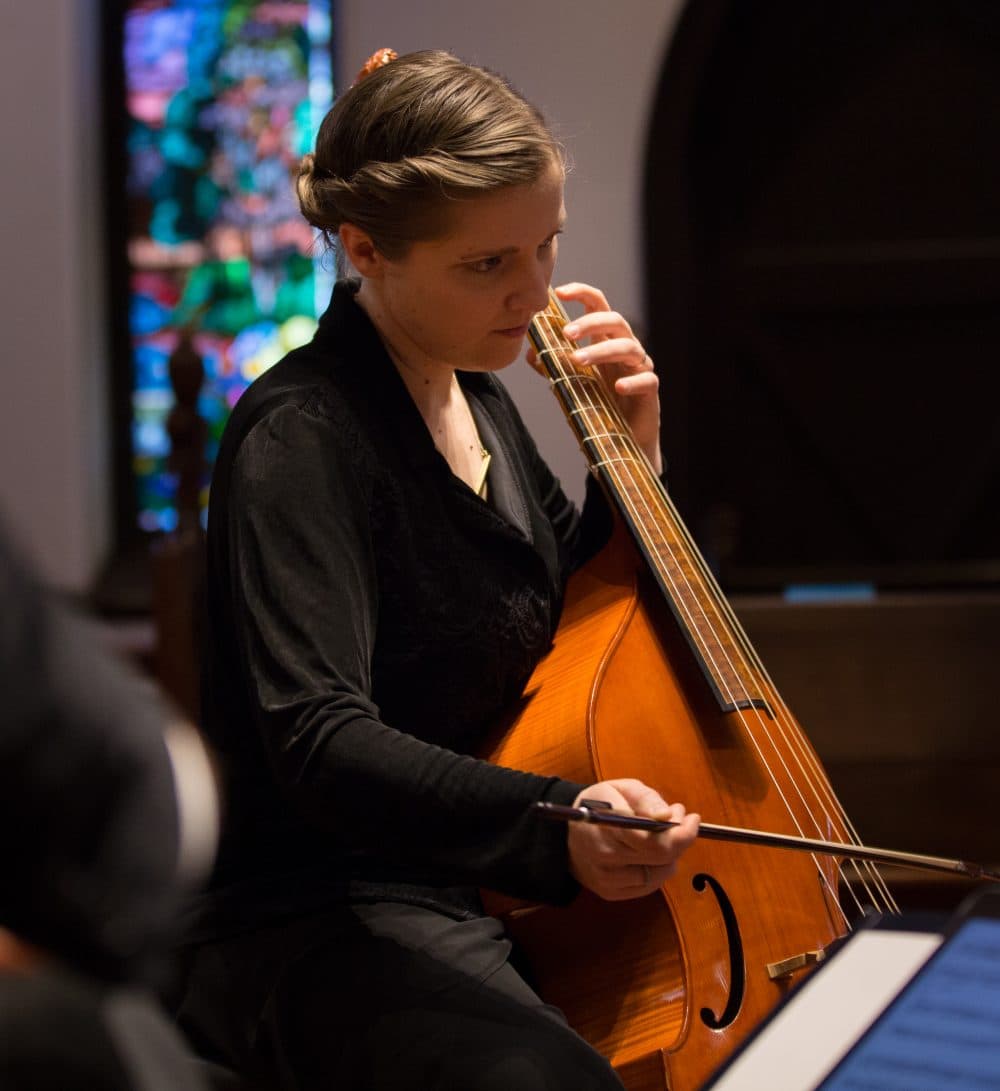
SHEIR: And in fact, you can see a picture of Rebecca playing the viola da gamba above.
The next instrument we’ll talk about comes from the Ethiopian story, “The Lion’s Whisker.” That’s the one about a brother and sister who seek out a magic potion to help them stop fighting.
Here’s a taste of that episode:
BROTHER: A lion’s whisker? We can’t possibly do that!
NARRATOR: Brother might have been scared… but he also… was curious. He watched as Sister grabbed a piece of meat from the kitchen and ran out the door. He stayed a few steps behind as Sister raced through the forest and up to the river.
Sister set the meat near the water and jumped behind a bush to hide. Brother jumped behind another bush close by.
SHEIR: The instrument you heard there is the mbira. And Eric, you actually have an mbira with you right now, here in our studio. Can you describe for us what it looks like, and how you play it?
SHIMELONIS: Well, picture, if you will, a nice wooden board, about the size of a notebook, with a bunch of thin metal pieces attached. The pieces are all of different sizes, and different notes. You hold the wooden board in your hands and then you pluck the metal pieces with your thumbs. Like this.
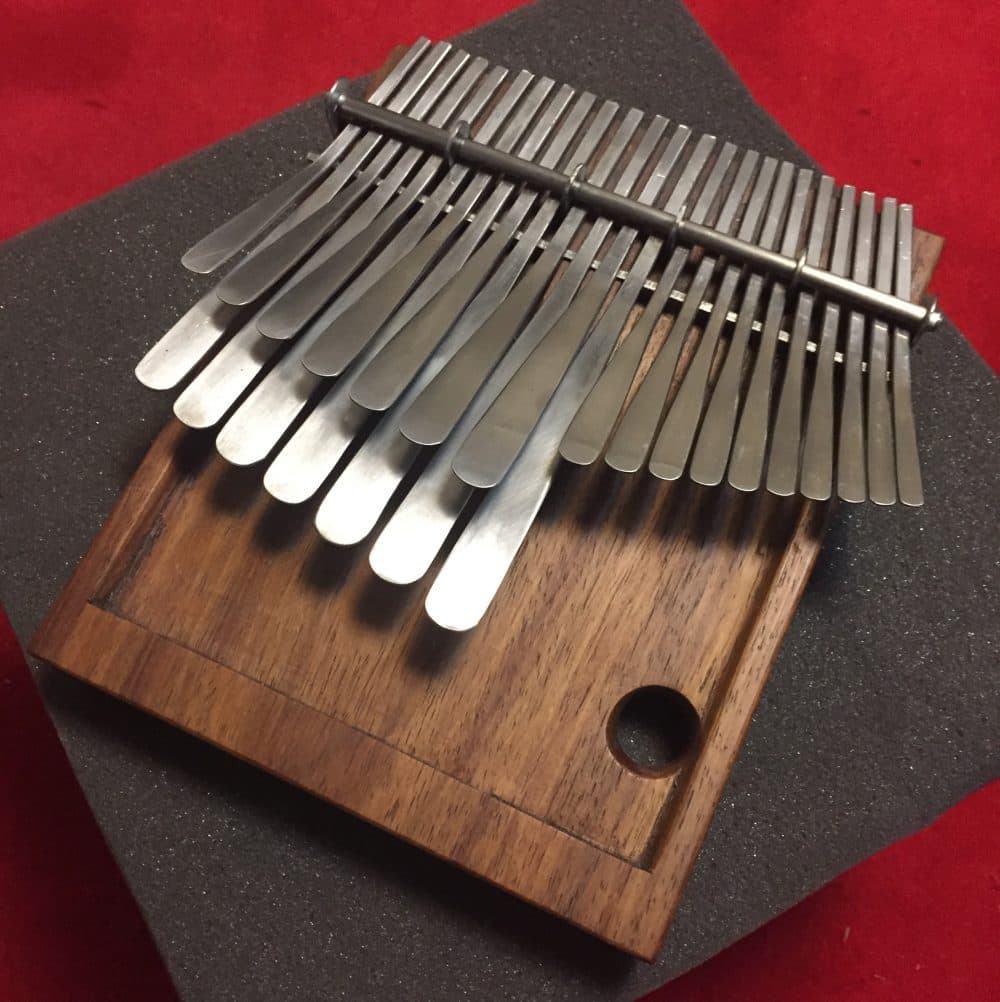
SHEIR: And you can find a photo of the mbira above. So, Eric, tell us about the mbira’s origins.
SHIMELONIS: Well, most people say the mbira goes back three-thousand years! Only back then, its keys, which are now made of metal, would have been made of wood or bamboo instead.
SHEIR: And fast-forwarding three-thousand years... to today: the mbira you used for “The Lion’s Whisker,” it actually came not from Africa, but from Europe, right?
SHIMELONIS: It did! I found a guy named Sebastian Pott. He lives in Germany. And he studied with some master mbira makers in southern Africa, in the country of Zimbabwe, and he custom-built this mbira for Circle Round!
SHEIR: Why did you choose to feature the mbira in “The Lion’s Whisker”?
SHIMELONIS: Well, being an African instrument, it was culturally right for the episode. Plus, the mbira has always been a favorite instrument of mine. Its sound is so pure and pleasing to the ear, and it’s just a joy to play!
SHEIR: If you’re listening to me and Eric right now, there’s a chance this is the first time you’ve learned about the mbira, or the viola da gamba. But the next instrument we’ll talk about might be more familiar.
This next instrument is from the Swedish story, “The Magpie With Salt on Her Tail.” That tale, you may recall, is about a boy who always wishes for things… and the magical bird who teaches him how hard work can make his wishes come true. Here’s a clip:
NARRATOR: The magpie! The same one that had been teasing him all day!
THEO: Wait – you? Magpie? You can talk?!?
NARRATOR: As Theo stared in wonder, the magpie opened and closed her beak. And as she did, she spoke.
MAGPIE: Yes, Theo. I can talk. The truth is, I’m actually an enchanted princess. And you will have your wish – but only if you help me.
SHEIR: Okay, any guesses what that instrument was? The one you just heard? Go ahead and call it out right now!
Ah! If you said “violin,” you are correct!
Now, some of you might have said “fiddle,” and that’s correct, too! A more informal name for the violin is “fiddle.” And you might know that of all the instruments in the string family, the violin — or fiddle — is the smallest, and has the highest pitch.
Now, Eric: you mentioned that versions of the mbira have been around for three-thousand years. And the viola da gamba goes back six-hundred years. So what about the violin? When were the first violins made… and played?
ERIC: Our modern string family, which includes the violin, viola, cello and bass, comes from Italy, in Europe. Historians trace them back to the early 1500s.
SHEIR: So... five-hundred years.
SHIMELONIS: Right. Its design has changed very little since the 1600s, when those Italian violin builders perfected the instrument.
SHEIR: Wow! And going back to “The Magpie With Salt on her Tail,” then… why did you use a violin for this story?
SHIMELONIS: The range and voice of the violin really captures the sounds and movements of a bird.
The violin is also an instrument that can play the most beautiful classical music, but it’s also right at home playing twangy country fiddle.
It’s all about how the musician plays it. And in this case, I asked another one of those ‘virtuosos’ we talked about — one of my longtime collaborators, Christian Hebel — to play the violin for us.
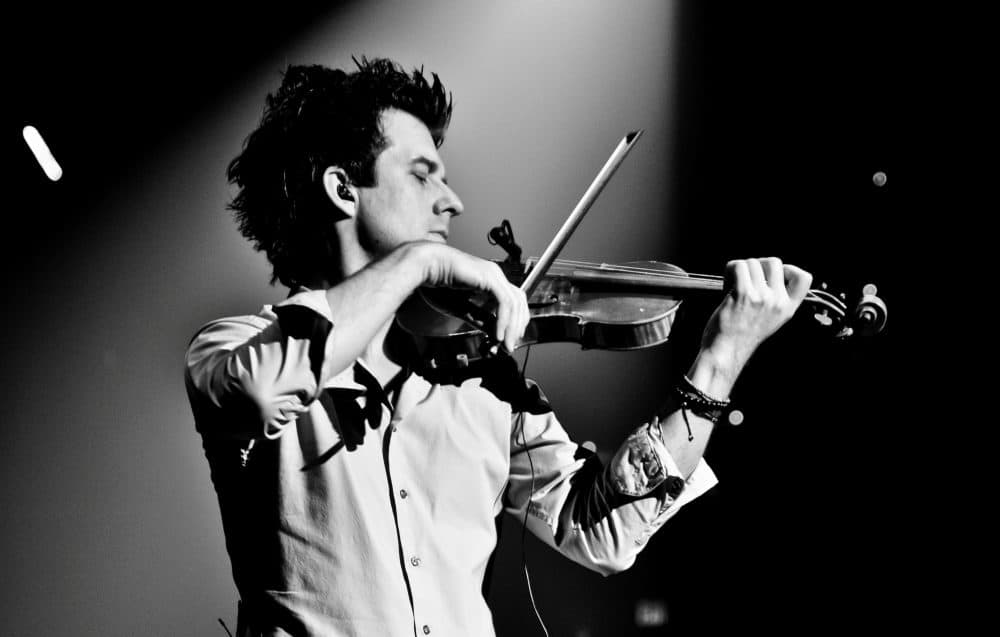
SHEIR: And you can see a photo of Christian playing the violin above.
Eric, now that we’ve looked back at some Circle Round episodes, let’s wrap things up by looking forward, to future episodes of the podcast. As the composer of the show, you’re writing new music for Circle Round right now, as we speak! So, what are some instruments you’re looking forward to including over the rest of the season?
SHIMELONIS: I’m really looking forward to an episode that will feature the bagpipes. We’ll also be playing some blues guitar, and I think we’re also going to use the Pipa, which is a Chinese lute, in an episode from that country. So, stay tuned!
